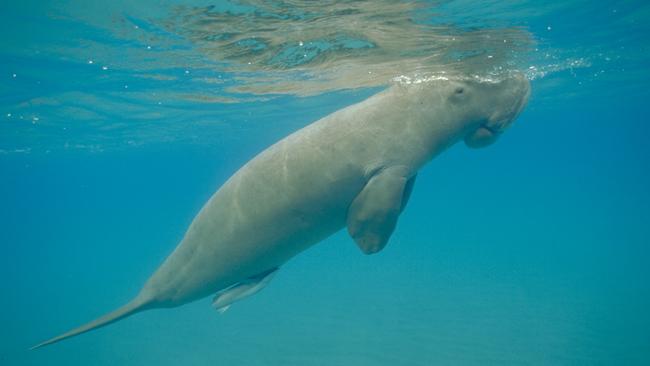Dugong deaths on par with whales: activist
A CONSERVATIONIST has labelled Australians “hypocrites” for condemning Japanese whalers while an estimated 1600 dugongs are killed each year.

Northern Territory
Don't miss out on the headlines from Northern Territory. Followed categories will be added to My News.
A CONSERVATIONIST has labelled Australians “hypocrites” for condemning Japanese whalers while hundreds of dugongs are reportedly slaughtered in Top End waters every year.
Australian wildlife activist Colin Riddell said dugongs were at risk of extinction because federal laws allow traditional land owners to hunt and kill the animals without restriction.
He estimated about 1600 dugongs – from a population of 10,000-40,000 – were killed in Territory waters each year.
Dugongs are protected by the Territory Parks and Conservation Act and the federal Environment Protection and Biodiversity Conservation Act but there is an exception for indigenous people who have the right to hunt dugongs under the Aboriginal Land Rights Act and Native Title Act.
“The worldwide status (of dugongs) is red listed vulnerable to extinction,” Mr Riddell said. “Traditions and culture cannot take precedence over extinction.”
Dugongs are listed as ‘‘near threatened’’ in the NT waters and as ‘‘Vulnerable’’ in Queensland and globally.
Mr Riddell described the practice of dugong hunting as “worse” than Japanese whaling because it was not subject to limits or controlled.
READ: OUTRAGE AT DUGONG ON MENU FOR NAIDOC LUNCH
“At least Japan has a season and quota, we are 365 days, 24/7 with no monitoring of numbers killed,” he said.
Mr Riddell said the methods used to kill dugongs were often brutal.
Mr Riddell said he was leading an Animal Coalition to “call for an urgent change to the Native Title Act 1993, so that any endangered or vulnerable animal or marine life is excluded from hunting by any means, for any reason”.
Parks and Wildlife Commission NT spokesman Edwin Edlund said there was no record of how many dugongs were “taken” annually.
“We do have estimates of 4400 north of the Tiwi Islands, 5500 around Croker Island and in Garig Gunak Barlu National Park, and 5500 between the Sir Edward Pellew Islands and Groote Eylandt in the Gulf of Carpentaria,” he said of current population numbers.
Mr Edlund said The Department of Land Resource Management (DLRM) plans to undertake aerial surveys around the NT coastline “to identify significant habitat and areas of high conservation value for dolphins and dugongs” in November.
“Repeating earlier surveys in some areas such as the Gulf of Carpentaria will provide information about population trends,” Mr Edlund said.
The NT News approached several traditional land owners known to hunt dugongs for comment but the offers were declined.


